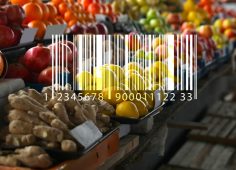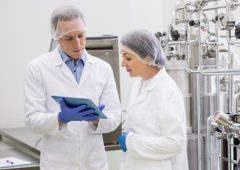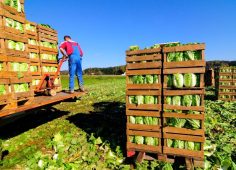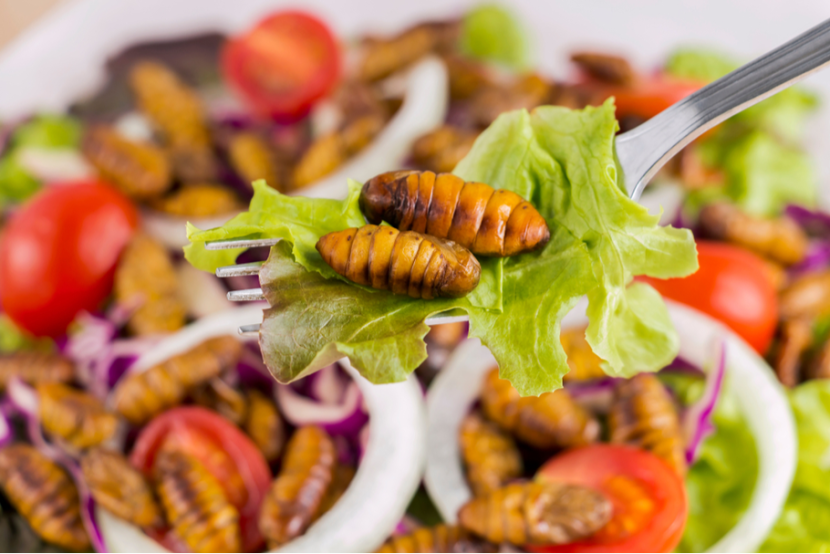Edible Insect Proteins as Novel Foods Need More Understanding and Oversight
By Suzanne Osborne
Edible insects have a long history of consumption in Africa, Asia, and Latin America, but they have only recently appeared in Western diets. Nutritional and sustainable to produce, insects may be a solution to future global food security.
Despite a history of being safely eaten, there is limited scientific data on the risks of foodborne pathogens in edible insects. The industry lacks best practice guidelines and there is no regulatory framework to ensure the safe production or processing of insects as food. Current limits for biological hazards are primarily extrapolated from the allowable limits in other foodstuffs. Since pathogens have unique growth, behaviour, and transmission patterns in different foods, these extrapolated limits are insufficient to ensure food safety.
Despite a history of being safely eaten, there is limited scientific data on the risks of foodborne pathogens in edible insects.
The Presence of Microbial Hazards in Edible Insects
Research shows that edible insects naturally harbor a large number of microorganisms, yet common pathogens such as Salmonella, Escherichia coli, Campylobacter, and Listeria monocytogenes are consistently absent from tested samples. Instead, retail samples routinely test positive for Staphylococcus aureus, Clostridium, and Bacillus cereus which still pose a risk to human health. This suggests that edible insects have unique bacterial hazard profiles compared to traditional food animals. To date, mycotoxins have been detected in low levels in edible insect products as well as their feed substrates. The fate of mycotoxins and their metabolites in individual insect species is unknown.

-
 Food SafetyFood TechnologyPodcastPreventative Controls and RiskSoftwareSupply Chain ManagementTechnology
Building a Culture Around Food Safety Data: Key Takeaways from Cronan McNamara
Food SafetyFood TechnologyPodcastPreventative Controls and RiskSoftwareSupply Chain ManagementTechnology
Building a Culture Around Food Safety Data: Key Takeaways from Cronan McNamara
-
 FeaturedFood SafetyFood TechnologySupply ChainSupply Chain ManagementTechnology
How Technology Has Improved Food Traceability Across Globalized Supply Chains
FeaturedFood SafetyFood TechnologySupply ChainSupply Chain ManagementTechnology
How Technology Has Improved Food Traceability Across Globalized Supply Chains
-
 ConsultingFeaturedFood SafetyFood Safety Culture & TrainingFood TechnologySoftwareTechnology
Embracing the Digitalization of Food Safety, Without Fear
ConsultingFeaturedFood SafetyFood Safety Culture & TrainingFood TechnologySoftwareTechnology
Embracing the Digitalization of Food Safety, Without Fear
-
 ConsultingFeaturedFood RecallsFood SafetyPublic Health
Early Crisis Communication Safeguards Companies During Food Industry Recalls
ConsultingFeaturedFood RecallsFood SafetyPublic Health
Early Crisis Communication Safeguards Companies During Food Industry Recalls
-
 ConsultingFeaturedFood RecallsFood SafetyFood Safety Culture & TrainingTraining and Education
Innovative Approaches to Food Safety Training for Modern Manufacturing
ConsultingFeaturedFood RecallsFood SafetyFood Safety Culture & TrainingTraining and Education
Innovative Approaches to Food Safety Training for Modern Manufacturing
-
 Audit and CertificationsFeaturedFood RecallsFood SafetyFood Safety ComplianceSupply ChainSupply Chain Management
Ready for FSMA Rule 204? Increased Traceability Requirements for High-Risk Foods
Audit and CertificationsFeaturedFood RecallsFood SafetyFood Safety ComplianceSupply ChainSupply Chain Management
Ready for FSMA Rule 204? Increased Traceability Requirements for High-Risk Foods




